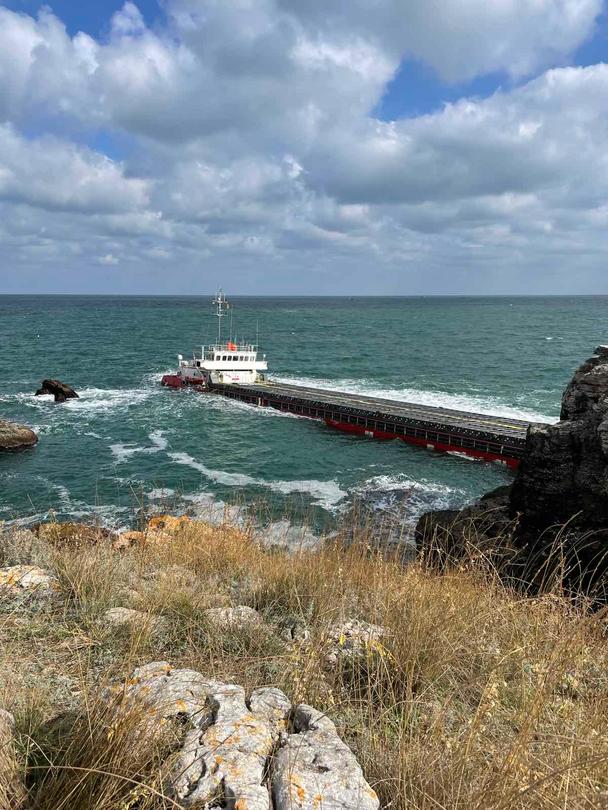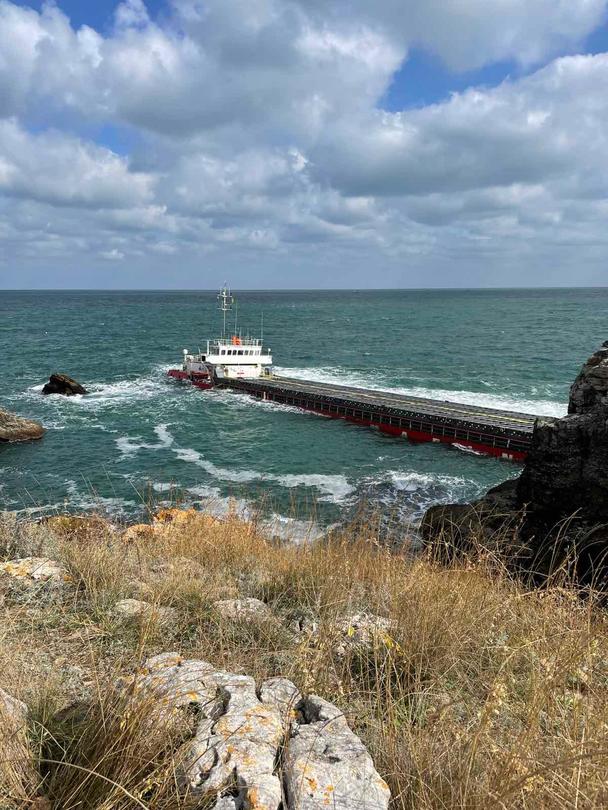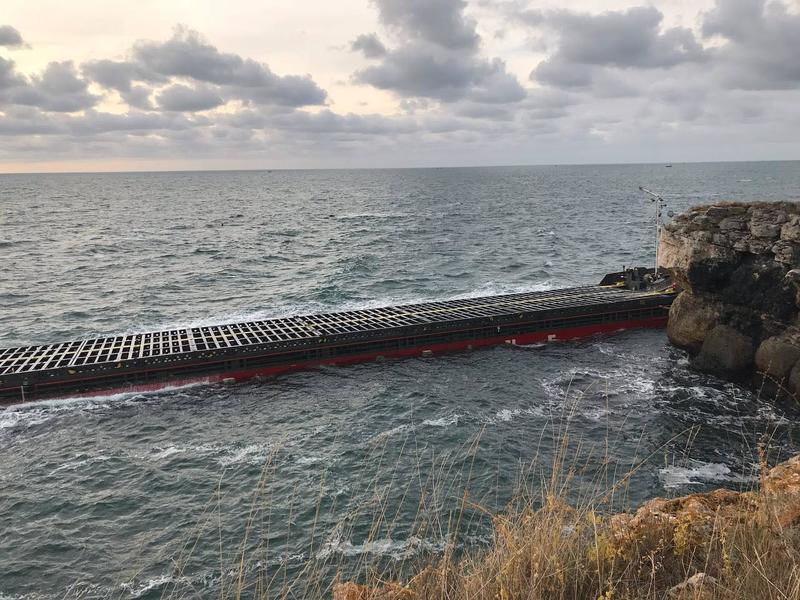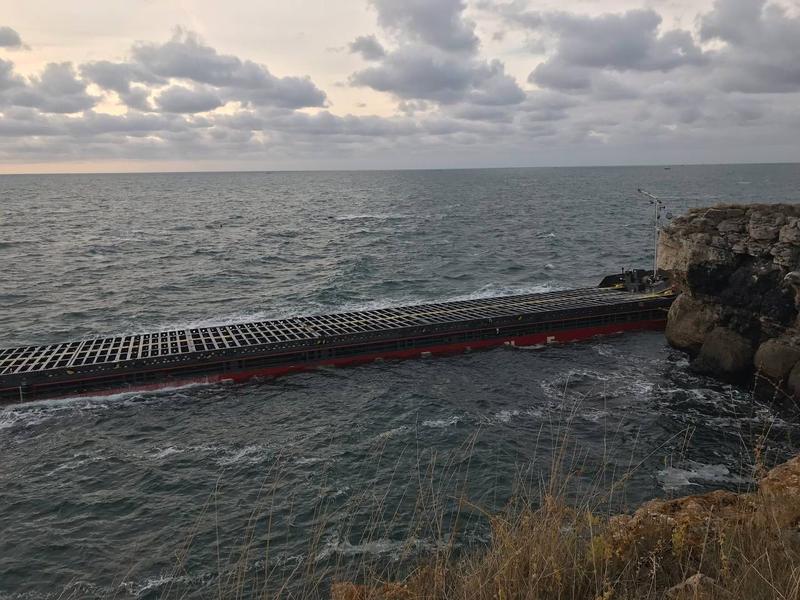Analysis has been carried out based on biological elements for water quality in the region of the run-aground ship
11 Oct, 2021 | 15:40MOEW teams continue to monitor the state of the marine environment in the waters of the run-aground ship “Vera Su” on a daily basis.
In order to determine the degree of impact on the marine environment and its inhabitants and to adequately identify possible environmental risks, analyzes have been carried out on biological quality indicators - phytoplankton and chlorophyll. The results obtained so far confirm the ecological assessment stating a “moderate condition” of the coastal body of water, where the ship is stranded.
The results of the regular samples show stability in the values of observed indicators, such as pH, salinity, dissolved oxygen, oxygen saturation, ammonium nitrogen, nitrite nitrogen, and nitrate nitrogen. Water samples for ammonium nitrogen taken near the ship also show comparable values. The hitherto reported tendency for retention of similar values for observed indicators is confirmed.
In addition to daily monitoring and in order to ensure screening of seawater in the immediate vicinity of the ship, water sampling has been carried out for scrutiny of the content of the following metals - iron, manganese, zinc, lead, cadmium, nickel, total chromium. The reported results for each of the analyzed heavy metals are below the limits of environmental quality standards, which indicates that the waters around the ship are not contaminated with metals.
The MOEW had also taken actions to commission a full analysis of the ship’s cargo. The results of the analysis of the sample confirmed that the cargo is pure urea, which fully corresponds to the provided cargo safety information sheet.
The additional area monitoring, developed jointly with experts from the Institute of Oceanology at the Bulgarian Academy of Sciences, was conducted despite the complex meteorological situation. The selected 7 points in the area south and southeast of the ship “Vera Su” are consistent with the direction of the prevailing sea currents. The location of the points allows to track the potential impact on the marine environment in the longer term by conducting periodic model surveys of coastal marine water.
MOEW teams continue to monitor the state of Black Sea water on a daily basis in the immediate vicinity of the run-aground ship and remain ready to assist during the next unloading operation.



